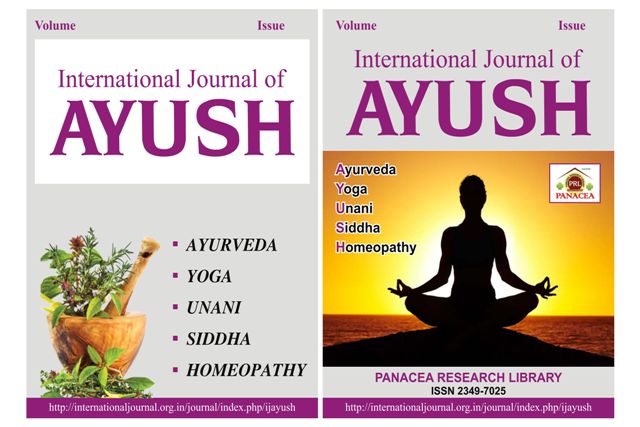COMPREHENSIVE STUDY OF AGNIMANTHA AND SHYONAKA W.S.R. TO THEIR VEDANASTHAPANA KARMA
DOI:
https://doi.org/10.22159/prl.ijayush.v14i09.1503Keywords:
Agnimantha, Shyonaka, Vedanasthapana Karma, Dashamoola, Analgesic, AyurvedaAbstract
Background: Pain management has remained a central therapeutic concern in both Ayurveda and modern medicine. Among the Dashamoola group of drugs, Agnimantha (Clerodendrum phlomidis Linn.) and Shyonaka (Oroxylum indicum Linn.) hold special significance due to their classification under Vedanasthapana (analgesic) and Shothahara (anti-inflammatory) actions. Classical Ayurvedic texts extensively describe their Rasa, Guna, Virya, and Vipaka, highlighting their potential role in alleviating painful conditions. Modern research also validates their anti-inflammatory, antioxidant, and analgesic properties, indicating a convergence between traditional knowledge and contemporary evidence. Aim To study Agnimantha and Shyonaka with special reference to their Vedanasthapana Karma. Objectives To review classical references. To assess therapeutic uses in pain disorders. To explore phytochemistry and pharmacology. To correlate Ayurvedic and modern perspectives. Materials and Methods: This study is based on a literary review of classical Ayurvedic texts including Charaka Samhita, Sushruta Samhita, Ashtanga Hridaya, and Nighantus, alongside modern pharmacological and clinical research articles. Data were systematically compiled regarding synonyms, morphology, phytochemistry, pharmacological properties, and therapeutic indications. Comparative analysis was performed between Ayurvedic descriptions and modern biomedical findings to establish clinical relevance. Results: Both Agnimantha and Shyonaka are consistently indicated in painful and inflammatory disorders such as Gridhrasi (sciatica), Amavata (rheumatoid arthritis), and Shotha (inflammation). Their classical properties—Tikta-Kashaya Rasa, Laghu-Ruksha Guna, Ushna Virya—correlate with modern findings of significant anti-inflammatory, antioxidant, and analgesic effects. Phytochemical analysis reveals the presence of flavonoids, tannins, and alkaloids, which are linked to their analgesic activity. Conclusion: Agnimantha and Shyonaka demonstrate strong evidence as effective Vedanasthapana drugs. Integrating classical insights with modern pharmacology strengthens their therapeutic potential for pain management. Further experimental and clinical studies are warranted to standardize formulations and establish dosage protocols.



